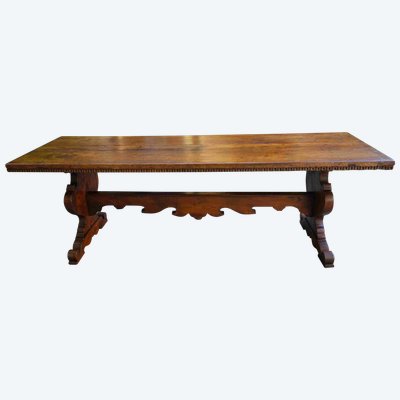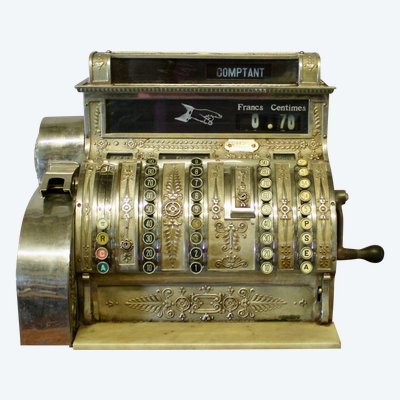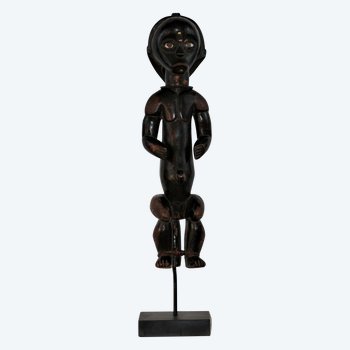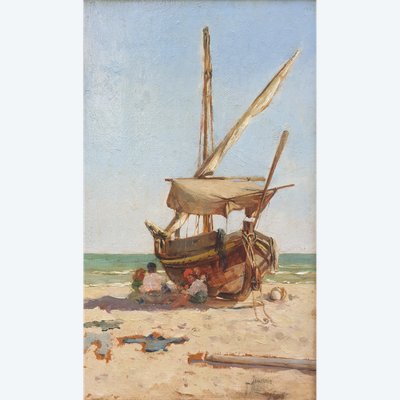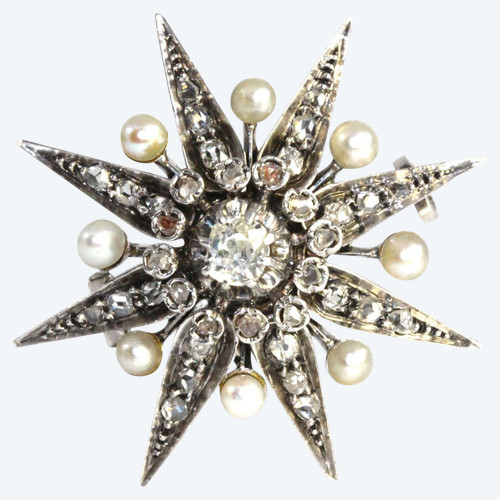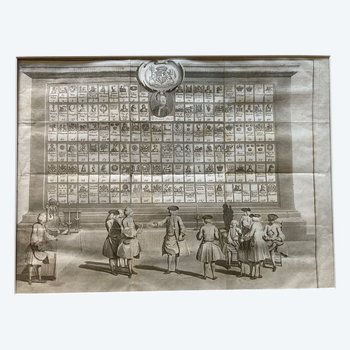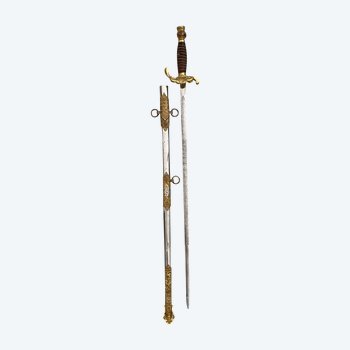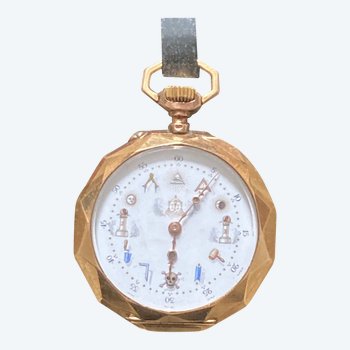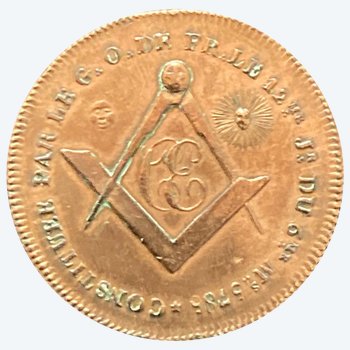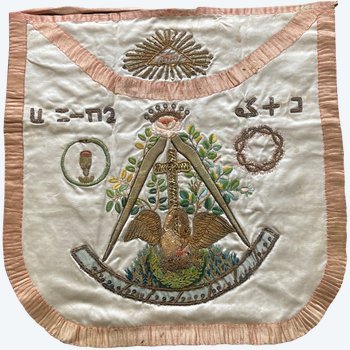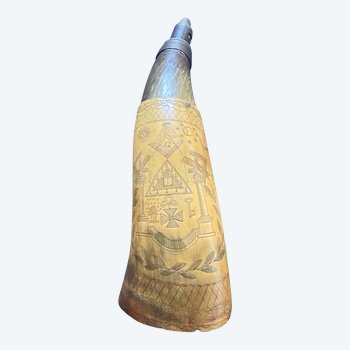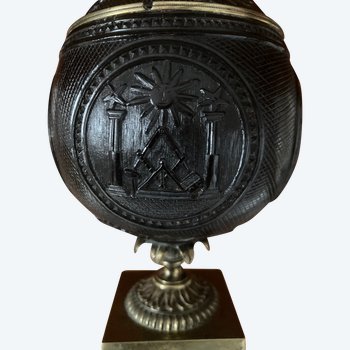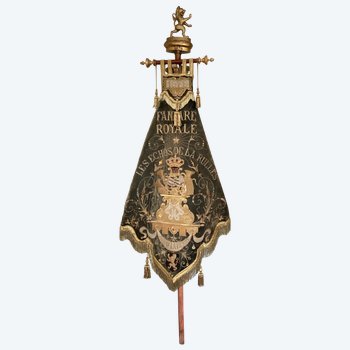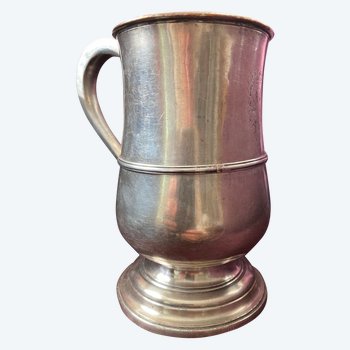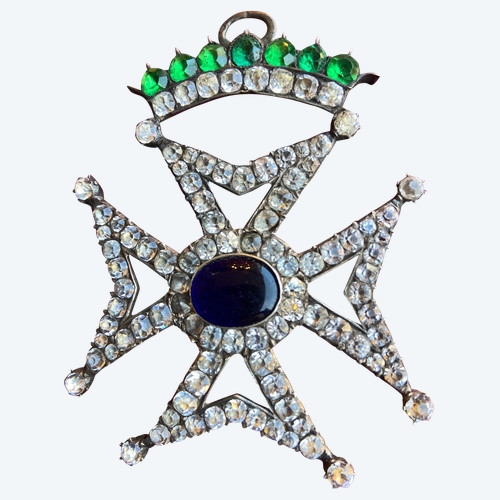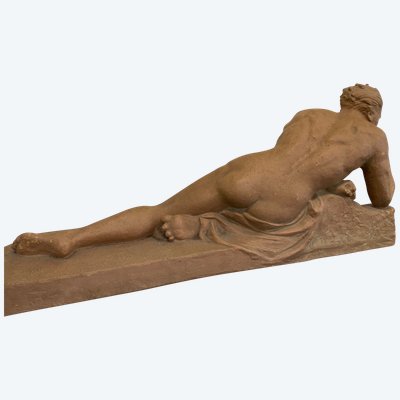This description has been translated and may not be completely accurate. Click here to see the original
Engraving on Steel of 1736 signed Bernard Picart
The Free-Massons
source : http://expositions.bnf.fr/franc-maconnerie/grand/frm_040.htm
The coat of arms of the different lodges of Free-Massons
Bernard Picart, print extracted from his work Cérémonies et coutumes religieuses de tous les peuples du monde, représentées par les figures dessinées par Bernard Picard, vol. IV, Amsterdam, J. F. Bernard, 1736.
Steel engraving, paper, 315 x 410 mm
BnF, Department of Prints and Photography, RF mat. 1 (box 1)
Bibliothèque nationale de France
At the time of the publication of the first edition (1723-1737) of this monumental work marking a milestone in the history of religions, Freemasonry was still inchoate on the European continent. It is in London that the Amsterdam engraver Bernard Picart (1673-1733), master of the editorial set, places the only scene he dedicates to it. Entitled Les Free-massons, it shows a decoration of coats of arms of one hundred and twenty-eight English lodges, with, among them, under n° 90, that of one of the first French lodges to be historically well documented, founded around 1725, by the British, and known under the name of "Saint Thomas Lodge n° 1", which met at the sign of the Louis d'argent, rue des Boucheries.
Editions followed one another throughout the century, and in 1807 Picart's followers published a posthumous edition, illustrated with several engravings, some of them on double pages, which contained several dozen pages of developments on the development of the order.
While in England at the beginning of the 18th century, the so-called "speculative" Freemasonry was flourishing, and was also spreading across the Channel, it is appropriate to clarify the definition of the word "Freemason", which is a transposition into French of the English word "free mason". Contrary to what has often been asserted, on the etymological level, the word "free" does not refer to the word "libre" and to the supposed franchises enjoyed by the masons of the Middle Ages. Free mason is in fact an abbreviation of freestone mason, referring to a particular quality of stone that can be carved. In Scotland, the expression free mason does not exist, the members of the lodges being known there only as masons (which are eventually specified accepted masons or gentlemen masons). After some hesitation - "frimasson", "frey-maçon" -, the French adopted the translation "franc-maçon" in the 1740s. In the 18th century, Freemasonry was often referred to as "Royal Art", the origin of which remains rather enigmatic. Until the beginning of the 19th century, we sometimes find the expression "Freemasonry".
In the foreground the lodge at work. On the wall the signs of 129 lodges (or rather of the taverns where they met). Of these 129, two are French: No. 90, is in Paris at the Louis d'Argent rue de Boucherie (sic), and No. 127, in Valenciennes in French Flanders. "In Paris, at Rollins Fils, Quay des Augustins, at Saint Athanase, & at the Palm Tree. MDCC XXXXI, with the approval of the King "
Ref: 91XRHLPEJ3
 Large Italian abbey table in walnut
7.500 € EUR
Large Italian abbey table in walnut
7.500 € EUR
 Napoleon III Brooch Pearls and Diamonds
1.450 € EUR
Napoleon III Brooch Pearls and Diamonds
1.450 € EUR

